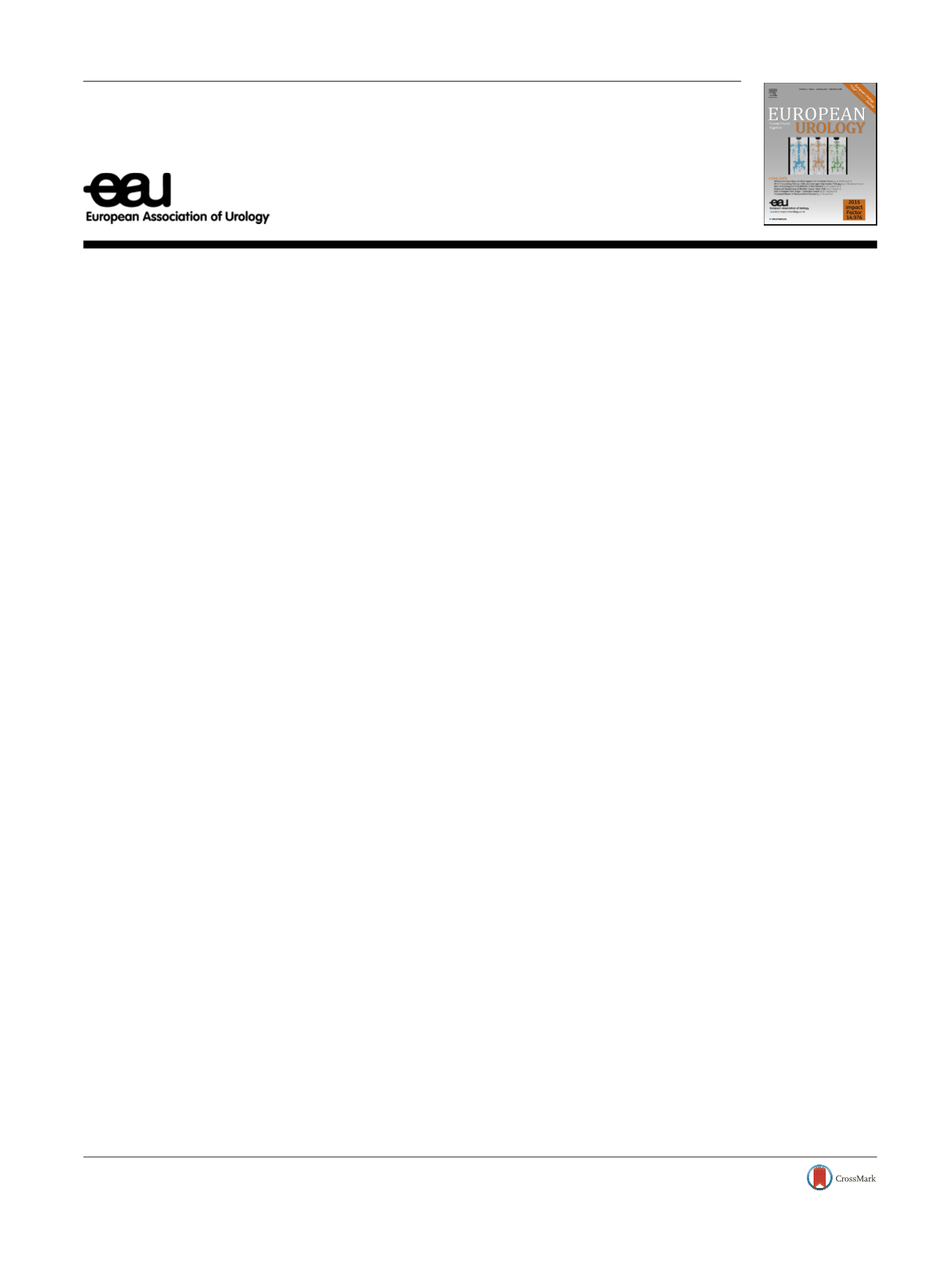

Letter to the Editor
Reply to Thomas Van den Broeck, R. Jeffrey Karnes,
and Steven Joniau’s Letter to the Editor re:
[1_TD$DIFF]
Amar U. Kishan, Talha Shaikh, Pin-Chieh Wang, et al.
Clinical Outcomes for Patients with Gleason Score
9–10 Prostate Adenocarcinoma Treated With Radio-
therapy or Radical Prostatectomy: A Multi-institutional
Comparative Analysis. Eur Urol 2017;71:766–73
We thank Dr. Van den Broeck and colleagues for their
interest in our article
[1]
. They correctly state that there
were differences in other-cause mortality between the
three treatment cohorts (radical prostatectomy [RP],
external-beam radiotherapy [EBRT], and EBRT plus brachy-
therapy [BT]). However, we disagree that a cause-specific
hazard model would have been more appropriate than the
Fine and Gray competing-risks model we used. Both
strategies are considered reasonable means of accounting
for competing risks
[2]
, and the Fine and Gray model is
widely used in urologic oncology (as evidenced by multiple
publications, including recent reports in
European Urology
[3]). Furthermore, it is well known that patients in surgical
cohorts are younger and healthier, on average, than those in
radiotherapy cohorts; for example, the median age of
surgical patients in our series was 62 yr, compared to 70 yr
in both radiotherapy cohorts (
p
<
0.0001). It is highly likely
that other-cause mortality would be much higher in a
population of older patients, and a cause-specific hazard
model (which removes patients who experience other-
cause mortality from the at-risk population) would have
introduced a significant bias against both radiotherapy-
based cohorts. Moreover, in addition to competing-risks
analysis via the Fine and Graymodel, we also performed Cox
regression analysis that was not adjusted for competing
risks, and did not find differences in prostate cancer–
specific mortality.
Van den Broeck et al also note that androgen deprivation
therapy (ADT) use in the EBRT and EBRT + BT cohorts
introduced a bias in terms of the endpoint of distant
metastasis–free survival (DMFS), as ADT may simply delay
rather than prevent metastases. They are correct that ADT
probably delays metastases, but this cannot explain the
findings of our study. The median follow-up duration for
EBRT patients was 4.2 yr, and they received ADT for a
median duration of 24 mo. The median follow-up for
EBRT + BT patients, however, was 6.5 yr, compared to 4.9 yr
for RP patients, and the median ADT duration in the
EBRT + BT cohort was only 8 mo. Even if ADT provided a
near 2-yr lead time against metastasis development, this
would not explain the significant differences in DMFS seen
at 5- and 10-yr follow-up between the EBRT + BT and the RP
cohorts. Moreover, simply attributing the DMFS effect to
ADT delay of metastases would leave unresolved the large
DMFS difference between the EBRT + BT and EBRT cohorts;
in fact, this difference is particularly notable because of the
significantly shorter ADT duration in the EBRT + BT cohort.
Finally, we agree that a head-to-head comparison of RP,
EBRT, and EBRT + BT for Gleason score 9–10 disease would
be the optimal means of comparing treatment efficacy.
However, while laudable, we posit that achieving this goal is
improbable given not only the significant provider biases
regarding treatment allocation but also the relative rarity of
Gleason score 9–10 disease. Indeed, this series constitutes
the largest such cohort with individual patient-level
outcome data that has been published. We are actively
working to expand our analysis to include additional
institutions and increase the statistical power of our study
[3,4].
Conflicts of interest:
The authors have nothing to disclose.
References
[1]
Kishan AU, Shaikh T, Wang PC, et al. Clinical outcomes for patients with Gleason score 9-10 prostate adenocarcinoma treated with radiotherapy or radical prostatectomy: a multi-institutional com- parative analysis. Eur Urol 2017;71:766–73.
[2]
Lau B, Cole SR, Gange SJ. Competing risk regression models for epidemiologic data. Am J Epidemiol 2009;170:244–56.
[3]
Lee BH, Kibel AS, Ciezki JP, et al. Are biochemical recurrence out- comes similar after radical prostatectomy and radiation therapy? Analysis of prostate cancer-specific mortality by nomogram-pre- dicted risks of biochemical recurrence Eur Urol 2015;67:204–9.
[4]
Kishan AU, Shaikh T, Stock RG, et al. Radiotherapy versus radical prostatectomy for Gleason score 9-10 prostate adenocarcinoma: a multi-institutional comparative analysis of 1001 patients treated in the modern eraPresented at Genitourinary Cancers Symposium; Orlando, FL. Abstract 7; February 15–18, 2017.
E U R O P E A N U R O L O G Y 7 2 ( 2 0 1 7 ) e 1 2 3 – e 1 2 4ava ilable at
www.sciencedirect.comjournal homepage:
www.eu ropeanurology.comDOIs of original articles:
http://dx.doi.org/10.1016/j.eururo.2017.01.018,
http://dx.doi.org/10.1016/j.eururo.2016.06.046.
http://dx.doi.org/10.1016/j.eururo.2017.01.0170302-2838/
#
2017 European Association of Urology. Published by Elsevier B.V. All rights reserved.
















